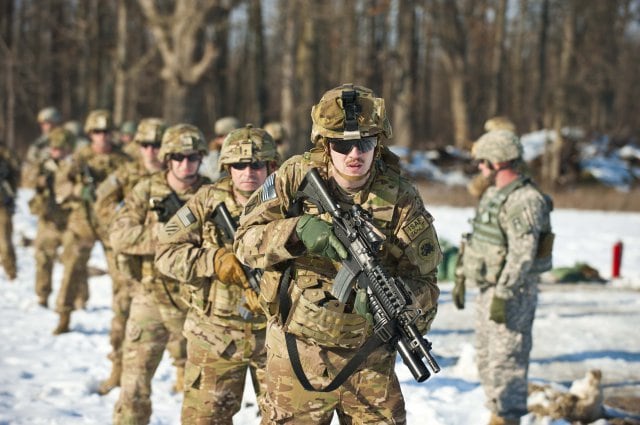The head of the National Guard Bureau says he believes the increased training days with the Army National Guard 4.0 initiative are sustainable but predicts some soldiers might need to make changes.
Gen. Joseph Lengyel, speaking Monday at an Association of the United States Army forum, said the 4.0 initiative focuses on certain units that need to deploy faster.
These high-priority units include heavy armored brigade combat teams and Stryker brigade combat teams.
“We are changing the operational deployment tempo and the training tempo of the Army National Guard,” Lengyel said.
Beginning this year, four brigades — instead of two — will train at combat training centers each year, according to bureau spokesman Lt. Col. Wes Parmer. By fiscal 2019, seven brigades will participate in war-fighter staff exercises and exportable CTC rotations every year.
For example, the Tennessee National Guard’s 278th Armored Brigade Combat Team will complete a rotation at Fort Irwin’s National Training Center this spring. The soldiers will deploy overseas later this summer in support of NATO’s Enhanced Forward Presence mission, Parmer told Army Times via email.
Although many Guardsmen will stick to the traditional commitment of 39 training days a year, Lengyel said that’s not the case for all Guard soldiers.
RELATED

The number of days a unit trains depends on where it falls within the sustainable readiness model, Parmer said.
The sustainable readiness model for certain units has 39 days in the first year, 48 days in the second year, 60 days in the third year and 51 days in the fourth year, Lengyel said.
Select high-priority units have already transitioned to this four-year collective training cycle, Parmer said.
Lengyel said this training model should be sustainable for most Guardsmen, but he anticipates some soldiers will have to make changes.
“We’re in cycle one of this … the trick for us is to see how are we going to be able to do this in cycle two and three and beyond,” he said. “Is this sustainable? We tend to think it is, but I predict there will be some changes.”
Some soldiers’ civilian lives might not be able to tolerate the increased training, he said.
These soldiers might have to cross train to do another job that doesn’t require so many training days away from their civilian jobs and lives.
“Some of these people will be able to adapt, and they’ll do it,” he said. “As we recruit new people into the bottom of the organization, they won’t know any different, and it will be the new way the Army National Guard works.”
Lengyel said one way for Guard units to be ready faster is to increase the number of full-time support personnel.
About 16 percent of the Army National Guard is full time, and adding to that would help the Guard maintain equipment better and get more training down, he said.
“The only reason you have full-time people in the Army National Guard is to train part-time folks,” Lengyel said. “Without the full-time force there to do it, we’re not going to be able to maintain that.”
Charlsy is a Reporter and Engagement Manager for Military Times. Email her at cpanzino@militarytimes.com.




